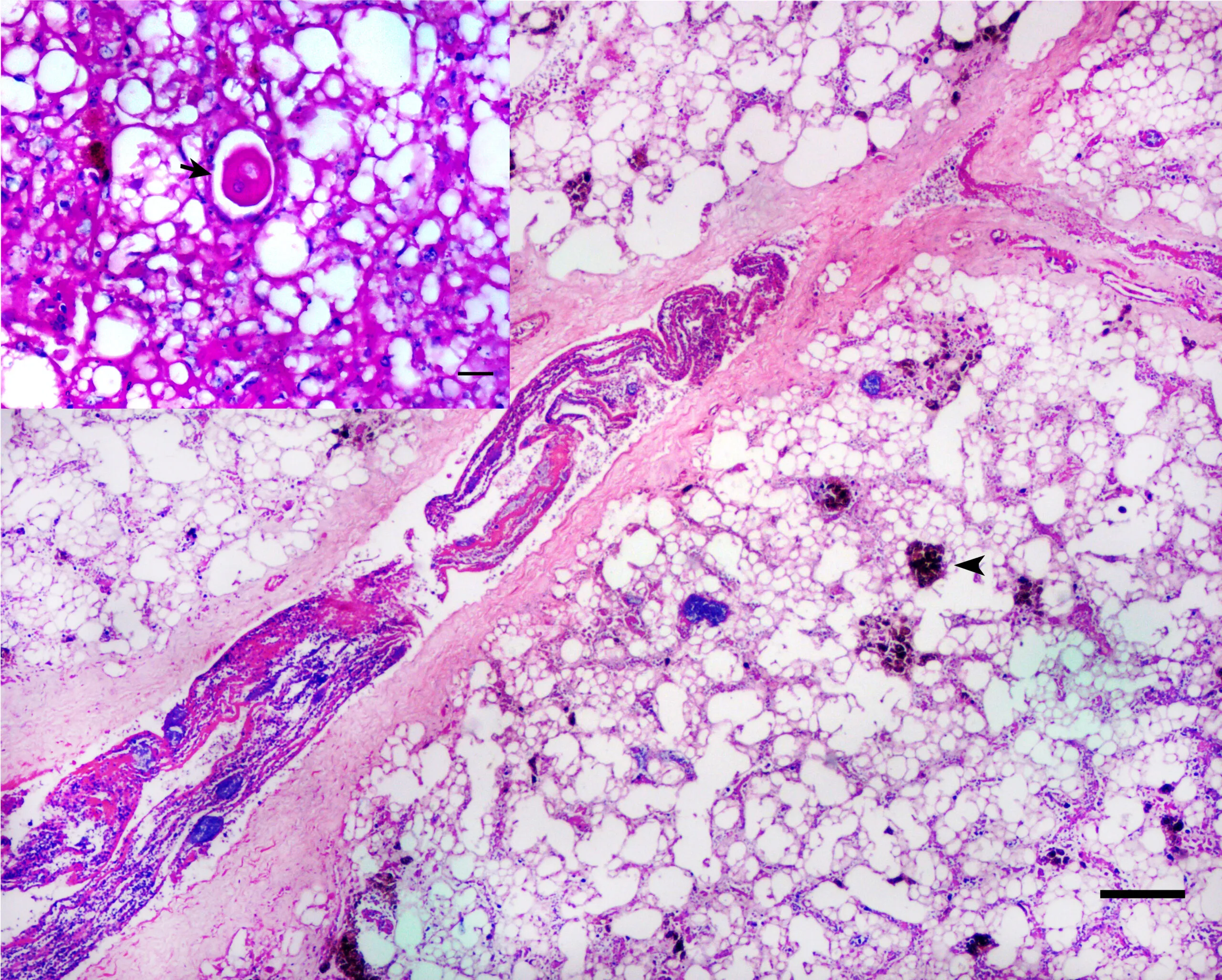Fatal and disseminated infection by Entamoeba invadens in a red-footed tortoise (Chelonoidis carbonaria)
DOI:
https://doi.org/10.24070/bjvp.1983-0246.v16i2p126-131Keywords:
protozoan, amebiasis, trophozoites, reptile, tortoise, hepatitis, enteritisAbstract
Amebiasis is an important parasitosis that can affect reptiles, specially caused by protozoas of the genus Entamoeba, which include pathogenic or commensal species. Entamoeba invadens is the most common amoeba to cause serious disease and death in reptiles. This paper aims to report a case of a sudden death due to a disseminated infection by Entamoeba invadens in a red- footed tortoise (Chelonoidis carbonaria). The animal was brought to the Center for Management and Conservation of Wild Animals of the Fauna Division and found dead after being kept in an enclousure with other captive tortoises for 11 months. Macroscopic findings evidenced necrotizing typhlitis and proctitis and round yellow areas in the right lobe of liver parenchyma. In the histological examination, necrotizing and heterophilic enteritis and necrotizing hepatitis with macrovesicular degeneration of hepatocytes, associated with mixed inflammatory infiltrate were present. Both organs revealed numerous amoebic trophozoites, morphologically suggestive of the genus Entamoeba, and bacterial colonies. The agent was confirmed by PCR and Sanger DNA sequencing, which leads this study to be the first confirmed case report of E. invadens infection in Brazil in a red-footed tortoise.


